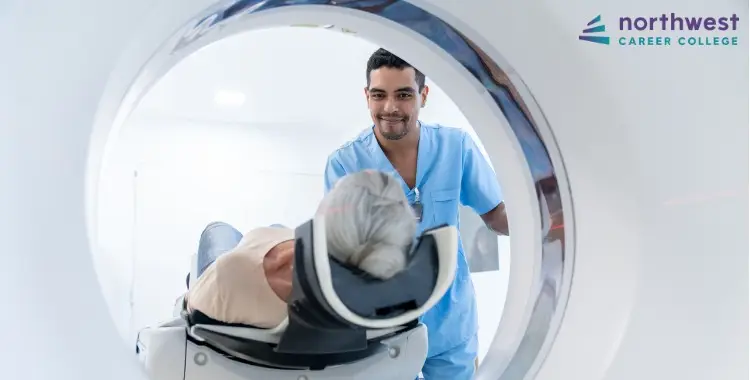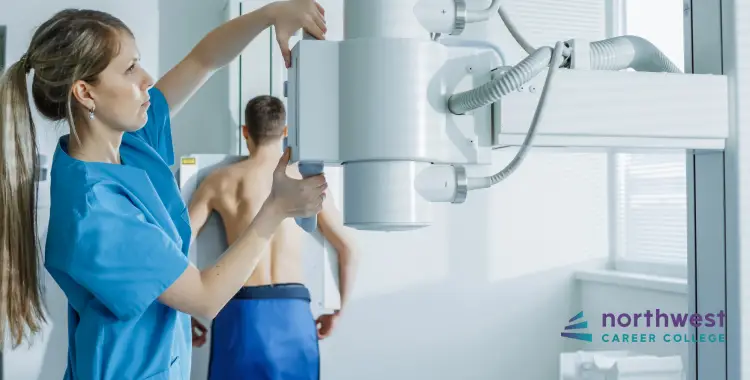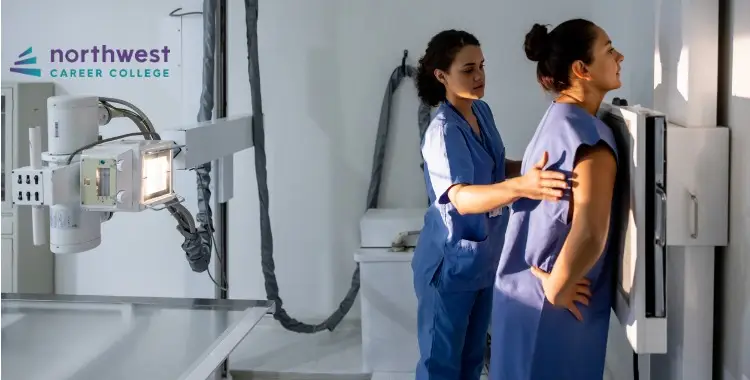Is Radiography Going Green? Sustainable Practices in X-ray Technology
- Radiography
- March 12, 2024
- 3.1k views
- 5 min read

If you’re like me, you see articles about environmental concerns almost every day in the media. Every industry is talking about how they can make their practices more sustainable to avoid further impacts on man-made climate change or pollution of the natural world.
Now, you might wonder, what does this have to do with videography? But in fact, the world of radiography is evolving, and sustainability is making its way into standard practices in the field. let’s explore the emerging practices of sustainability in X-ray technology
Table of Contents
Digital Radiography: Less Waste, More Efficiency
Depending on your age, you may not have interacted with film X-rays… But if you are old enough to remember, the idea conjures up images of film rolls, big containers of chemicals to develop the film, and a lot of waste. Not to mention the smells. But guess what? Digital videography is here!
Digital radiography started slowly but has become increasingly prominent over the last few decades. With digital radiography, there are no more chemicals, no more film development, and no more hazardous waste! Images are captured electronically, sent to a computer, and immediately processed! It’s cleaner, faster, and doesn’t harm the environment. What more could you ask for?
Another benefit of digital radiographs is that you can easily store and share these images without stacks of films and files. When you share digital X-rays, they maintain the same high-quality image as the original, unlike when you make copies of film radiographs, which renders them practically unusable.
Lower Dose, Same Precision
How many of you know someone who tries to avoid X-rays because they are worried about radiation exposure? I know I do! The good news is that radiography technology has evolved to substantially lower radiation doses while improving image quality.
This stems from a push within the field to use the ALARA principle, where you use a dose “as low as reasonably achievable.” However, this was only enabled as we transitioned to digital radiography. It would not have been possible using film X-rays.
In addition to the lower amount of radiation needed when using fast-exposure digital film, the X-ray and other radiography machines themselves are more precise than they have ever been. New machines are designed to focus on the exact area of interest, further reducing the total amount of radiation exposure and reducing unnecessary exposure to other parts of the body.
3. Energy-Efficient Equipment
We’ve all heard about Energy Star homes, so we shouldn’t be surprised that energy-efficient radiography machines are becoming a standard part of the industry. Think LED lighting in your home, but on a much larger scale. Most people don’t know, but radiography machines use a significant amount of energy, so finding even a small bit of efficiency can make a large difference.
Modern X-ray equipment is designed top to bottom to consume less power. This reduces the carbon footprint from an energy consumption perspective. These energy-efficient machines are being adopted in hospitals, large clinics, and specialty radiography facilities, as they have the largest volume of procedures and, therefore, the best ability to recoup their investment. These facilities can see an immediate reduction in electricity consumption, making a big difference in their sustainability and profitability.
Additionally, as these energy-efficient units start to proliferate more broadly, they will allow the healthcare industry to bring radiography machines to previously underserved areas that did not have access to reliable power, such as hospitals and medical facilities in the global south.
4. Paperless and Digital Systems
There has been a significant push by the federal government to encourage healthcare providers to transition to electronic medical records over the past 10-15 years. You have likely already observed the adoption of such paperless systems in full force in almost every medical, dental, and other healthcare facility you have visited recently.
Radiology facilities are no different, as many are transitioning to digital-first, primarily paperless systems for patient records and image storage. Digital records systems allow for smoother communications between healthcare professionals, as radiography centers can transmit images to primary care and specialist offices with ease and without data loss, enhancing patient care. It’s a win for medical office efficiency, patient privacy, and patient health outcomes. It also means you chop down fewer trees, so it’s a win for the environment, too!
5. Recycling and Proper Disposal
Last but not least, it wouldn’t be a proper push for environmental sustainability if radiography was not exploring how to recycle more of the materials used to make its equipment and supplies.
One good example is related to lead recycling. Lead aprons, industry-standard equipment that shields patients against excess radiation, can now be recycled! Since lead is a heavy metal toxic to the environment, it is great that it can now be disposed of via recycling rather than landfill.
Although not all healthcare facilities have implemented led recycling programs, the industry is trending in this direction. It is a small step, but one with a substantial eco-friendly impact. Undoubtedly, there will be more opportunities to recycle other components of the radiography equipment ecosystem in the coming years.
Conclusion: A Greener and Healthier Future
As is evident from the topics discussed above, radiography is indeed going green. Sustainability practices are popping up throughout the industry. Some are more significant than others in terms of their daily impact on workflows, but all of them can have a significant impact on the environment if deployed at scale.
Not only are these practices positive for the environment, but they are typically also better for the efficiency of the healthcare system and improve patient safety during radiography procedures. These transitions represent true win-win changes to the radiography field.




